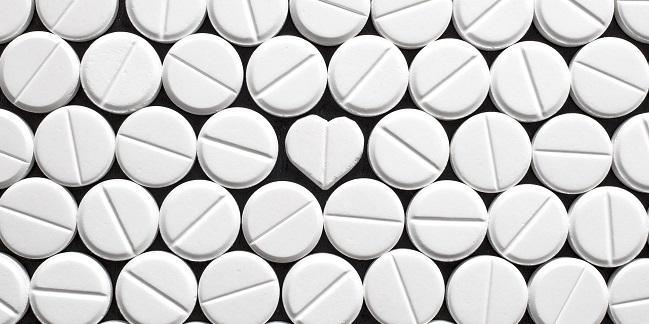Old Dog, New Tricks? HOMAGE Hints at Role for Spironolactone in HF Prevention
While the trial missed its primary endpoint, the diuretic’s effects on other key parameters warrant further study, experts agreed.

But the trialists say the positive effects of the drug on markers of collagen synthesis, blood pressure, hormones, and echocardiographic parameters point to a potential benefit that warrants further study.
"I do believe we have a strong proof-of-concept trial which may indicate that it is worth exploring spironolactone as a prevention for heart failure in patients at high risk, and we will work more on finding out whether there are signatures which may select patients more likely to respond to these therapies," said Faiez Zannad, MD, PhD (Université de Lorraine, France), in a late-breaking trial presentation here at the Heart Failure Society of America 2019 meeting last week.
Other experts also appeared to be swayed by the secondary findings.
"This is a very important study,” panelist Kismet D. Rasmusson, NP (Intermountain Healthcare, Salt Lake City, UT), commented. “I really think we're in a time when we need to be mindful about therapies that are effective in terms of reducing the risk of progressing to [advanced stage] heart failure."
“Clearly prevention is where we'd like to go," agreed panelist Bertram Pitt, MD (University of Michigan School of Medicine, Ann Arbor). Given recent success with a polypill to reduce both hypertension and cholesterol, Pitt asked if a similar concept that includes spironolactone might be on the horizon for heart failure prevention.
"That's a good question," Zannad observed. "We still need to refine the therapy . . . [but] at the end of the day, we really need further therapies to prevent patients from progressing to heart failure.”
Hints of Early Remodeling Seen
Patients were randomized to 25-50 mg of spironolactone per day (n = 265) or usual care (n = 262). All had risk factors for HF, which consisted of either a prior MI, angioplasty, or CABG, or at least two comorbidities such as diabetes and hypertension. They also had levels of N-terminal pro-B-type natriuretic peptide (NT-proBNP) high enough to be at risk for HF (125-1,000 ng/L) or BNP levels between 35 and 280 pg/mL.
The primary endpoint was a change from baseline to the final visit in PIINP for all patients with serum levels of galactin-3 above or below the median. The galectin-3 protein has been shown to play a role in tissue inflammation, repair, and fibrosis, and may be a prognostic biomarker in HF.
At baseline, median galactin-3 levels were 3.1 ng/mL in both the treatment and control groups. At a median follow-up of approximately 9 months, there was no statistically significant difference in PIINP levels between the two groups, which Zannad said is likely due to the study being underpowered and galactin-3 levels being generally low in most patients. However, serum levels of C-terminal propeptide of procollagen type I (PICP) were decreased at 9 months in the spironolactone group versus in the usual-care group (P < 0.0001). There was no interaction in the change in fibrosis biomarkers according to baseline galactin-3 levels.
Importantly, declines in NT-proBNP in the spironolactone group were immediate, dropping in the first month compared with usual care (P < 0.0001). Whether this is related to the diuretic effect or early remodeling, requires further investigation, Zannad said.
Echocardiographic changes seem to support the suggestion of early remodeling, with significant improvements in the spironolactone group compared with usual care in left ventricular mass, left atrial volume, early mitral valve flow velocity, E/A ratio, and deceleration time.
The research still has a long way to go, but this study suggests that it is safe and that it should continue to be examined as a viable potential preventive therapy. Kismet D. Rasmusson
“As you might expect, blood pressure was decreased very significantly," he added. Systolic pressures were nearly 10 mm Hg lower in the spironolactone group than in the usual-care group, and diastolic pressures were more than 3 mm Hg lower (P < 0.0001 for both comparisons). Additionally, potassium levels were 0.23 mmol/L higher in the spironolactone group and estimated glomerular filtration rate was lowered by an average of 4.58 mL/min/1.73 m2.
At final 9-month follow-up there were no significant differences in body weight between the two groups; the spironolactone group initially showed a small loss of weight in the first month compared with usual care, Zannad said, but there was no persistent weight loss over time.
“This is an early, but good first step in trying to understand how spironolactone might be used in a new way in appropriately selected patients,” Rasmusson commented to TCTMD. “The research still has a long way to go, but this study suggests that it is safe and that it should continue to be examined as a viable potential preventive therapy.”
L.A. McKeown is a Senior Medical Journalist for TCTMD, the Section Editor of CV Team Forum, and Senior Medical…
Read Full BioSources
Zannad F. HOMAGE proof of concept trial of spironolactone for the prevention of heart failure. Presented at: HFSA 2019. September 16, 2019. Philadelphia, PA.
Disclosures
- HOMAGE has received funding from the European Union’s Seventh Programme for research, technological development and demonstration.
- Zannad reports no relevant conflicts of interest.


Comments